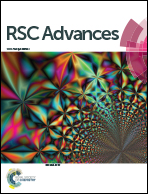Encapsulation of bioactive peptides: a strategy to improve the stability, protect the nutraceutical bioactivity and support their food applications
Abstract
In recent decades, bioactive peptides have become an emerging field of interest in the scientific community as well as the food, pharmaceutical, and cosmetics industries. A growing body of research indicates that consumption of bioactive peptides may play a vital role in health through their broad spectrum of bioactivity such as antioxidant, antihypertensive, antimicrobial, anti-inflammatory, immunomodulatory, and anti-proliferative activities. In addition, bioactive peptides can be used as food preservatives due to their antimicrobial and antioxidant activities. However, some factors limit their nutraceutical and commercial applications, including easy chemical degradation (e.g., pH, enzymatic), food matrix interaction, low water-solubility, hygroscopicity, and potential bitter taste. Bearing that in mind, the encapsulation of bioactive peptides in different materials can help overcome these challenges. Studies have demonstrated that encapsulation of bioactive peptides increases their bioactivity, improves their stability, sensory properties, increases solubility, and decreases hygroscopicity. However, there is limited scientific evidence about the bioavailability and food matrix interactions of encapsulated peptides. Besides, the diverse colloidal systems used to encapsulate bioactive peptides have shown stability and good encapsulation efficiency. This review provides an overview of current advances in the encapsulation of bioactive peptides, considering the technology, developments, and innovations in the last lustrum.

- This article is part of the themed collection: 2022 Reviews in RSC Advances


 Please wait while we load your content...
Please wait while we load your content...